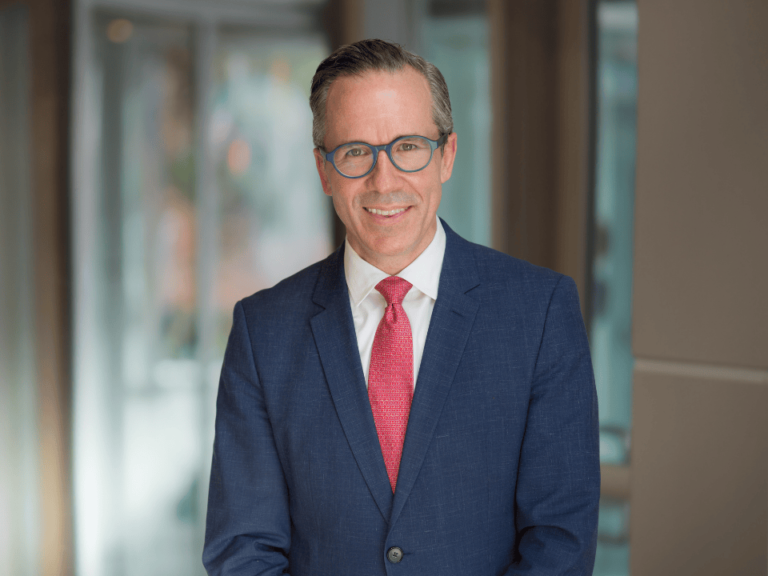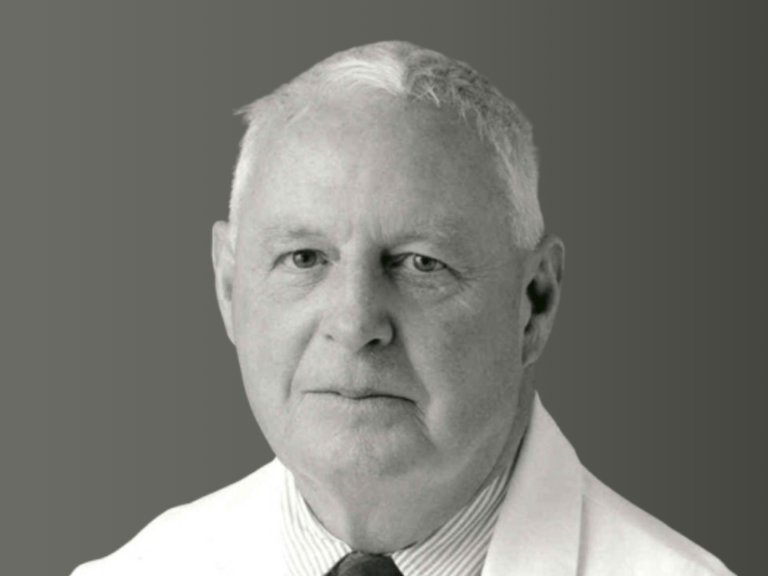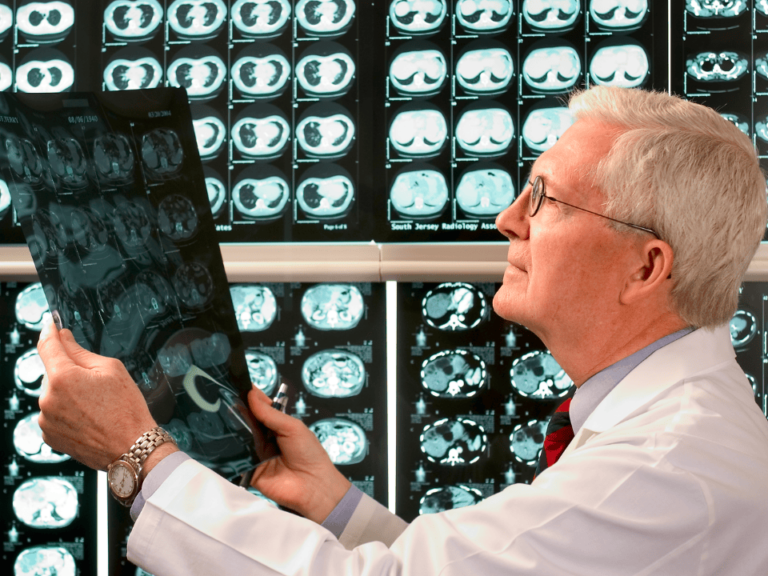Cancer reflects on progress
On Dec. 9, 1971, Benno C. Schmidt delivered a speech that sets the stage for the new era slated to begin exactly two weeks later, on Dec. 23, with the signing of the National Cancer Act by President Nixon:
It is now time to put aside any differences which have existed—and, happily, that should be relatively easy because many of the alleged differences never really existed—and work together to produce the best cancer program of which American science and American medicine is capable. Without arousing false hopes or false expectations, without minimizing in any way the complexities or difficulties of this implacable foe, let us all join together to give the American people what they want: the best cancer effort that lies within our capacity.
Schmidt, an attorney and industrialist credited with coining the term “venture capital,” delivered these remarks at the Conference on Planning Cancer Centers, which was sponsored by the American Cancer Society. He had just spent a year as chairman of the National Panel of Consultants on the Conquest of Cancer, a group that advised the U.S. Senate on launching a government-wide effort aimed at the eradication of cancer, and he would soon be appointed the first and arguably most effective chairman of the President’s Cancer Panel.
Schmidt’s speech was published in the American Cancer Society’s journal Cancer in April 1972 and republished in the Dec. 15, 2021, issue of the journal, to mark the 50th anniversary of the National Cancer Act.
Fadlo Khuri, president of American University of Beirut and former editor of the journal, writes in the introduction to the Schmidt paper:
The speech is adroit, eloquent without being wordy, and forward-looking without the slightest hint of jingoism. It, like the National Cancer Act, has worn remarkably well. Schmidt was an attorney, entrepreneur, and industrialist, and he worked well with others of diverse backgrounds, including scientists, philanthropists, and political leaders. He shepherded the efforts of 5 of the original standalone US academic cancer centers, the American Cancer Society, and the National Institutes of Health through a process that set the stage for much of the progress that we have seen over the last 5 decades in the war against cancer.
The Schmidt paper is published as part of Cancer’s special issue dedicated to the 50th anniversary of the National Cancer Act.
The issue also includes an editorial by Suresh Ramalingam, editor or Cancer and director of Emory University Winship Cancer Institute, and Khuri. The editorial concludes:
The 50th anniversary of the National Cancer Act provides an opportunity to reflect on our progress, review our challenges, and plan the future of cancer care and research… As we turn the page to a new chapter, it is clear that much work remains to be done. This is perhaps the end of the beginning and a prelude to new possibilities with another historic opportunity to rededicate ourselves to the next frontier in the fight against cancer, just as the visionaries of the National Cancer Act did in 1971.
The package of papers also includes a commentary by Otis W. Brawley, of Johns Hopkins University, and Paul Goldberg, of The Cancer Letter, assessing and quantifying the impact of the National Cancer Act.
Some highlights:
- The National Cancer Act increased support (politically and monetarily) for investigator-initiated research. This change—getting the government to pay for basic science—was still a relatively new concept early in the National Cancer Act, and it immediately won over the same medical school deans who were once opposed to the law.
- Consider the SARS-CoV-2 pandemic. When the pandemic struck, technologies that had been developed for cancer enabled rapid sequencing of the virus. The Chinese health authorities and the World Health Organization announced on Jan. 9, 2020, that a novel coronavirus was confirmed as the pathogen responsible for the pneumonia cases in Wuhan province. Then, over the weekend—Jan. 11 to 12—Chinese scientists shared the full sequence of the coronavirus genome as detected in samples from the first patients. Next, using messenger RNA technology, which was also developed for cancer research, scientists constructed a vaccine. This latter task took 12 weeks of engineering, but the technologies used were based in part on 50 years of cancer research. Similarly, monoclonal antibodies, a modality that has been used in the treatment of COVID-19, were developed for the treatment of cancer and are used for multiple cancer indications.
- An unfortunate but important finding from outcomes research is that a substantial number of Americans do not enjoy the fruits of research. Approximately 600,000 Americans die of cancer annually. It is estimated that if all Americans had the advantages of college-educated Americans, including access to prevention, appropriate screening, diagnostics, and therapy, 132,000 would not die. They are the unnecessary casualties. Perhaps the most pressing question not adequately addressed by the National Cancer Act is the following: “How can we get more Americans necessary optimal care?”
Brawley and Goldberg are co-editors of the Cancer History Project.
Quote of the week
Ending cancer as we know it means increasing access to screening to traditionally underserved communities. It means taking clinical care to people instead of having them come to us. It means having a two-way conversation about prevention, early detection, treatment and survivorship. It means connecting with those around us to enhance and save lives.
Robert A. Winn
NCI on “ending cancer as we know it”


NCI has created a Twitter Moment highlighting the steps it is taking to “end cancer as we know it,” an initiative by President Joe Biden.
“We want to use many approaches, including better screening and prevention and early diagnosis and treatment. All of these different approaches to end that tragedy of cancer,” NCI Director Ned Sharpless said in a video. “I believe by using these combined modalities we can and we will beat the president’s goal of ending cancer as we know it.”
The field of oncology responded with their own videos on what “ending cancer as we know it” means to them:
“Ending cancer as we know it means increasing access to screening to traditionally underserved communities. It means taking clinical care to people instead of having them come to us. It means having a two-way conversation about prevention, early detection, treatment, and survivorship. It means connecting with those around us to enhance and save lives. Nothing will stop us from fighting cancer,” said Robert A. Winn, director and Lipman Chair in Oncology at VCU Massey Cancer Center, and senior associate dean for cancer innovation and professor of pulmonary disease and critical care medicine at VCU School of Medicine.
“My vision of ending cancer as we know it is through engaging patients, survivors, post-survivors, those at high risk, helping them use their voice to make research patient-centered, and impacting the cancers across our catchment area,” said Hope Krebill, executive director of Masonic Cancer Alliance.
“Ending cancer as we know it means that when an oncologist meets a new patient, they will say ‘you have cancer. And these are the multiple ways we’re going to help you get better,’” said David A. Tuveson, president of the American Association for Cancer Research, Roy J. Zuckerberg Professor of Cancer Research, and cancer center director of Cold Spring Harbor Laboratory.
“Ending cancer as we know it means addressing the disproportionate cancer burden in underrepresented groups and making meaningful interventions to not only stop cancer in its tracks, but prevent it from happening in the first place,” said Anil K. Rustgi, director of the Herbert Irving Comprehensive Cancer Center at NewYork-Presbyterian/Columbia University Irving Medical Center.
“Ending cancer as we know it ensures that every cancer patient becomes a long term survivor. Cancer needs to be addressed with the same urgency that we’re seeing in response to the COVID-19 pandemic. That means funding and acceleration of research across the cancer continuum,” said Sung Poblete, chief executive officer of Stand Up to Cancer.
“To me, ending cancer as we know it means reducing or eliminating the burdens of that disease for our patients,” said Steven K. Libutti, director of Rutgers Cancer Institute of New Jersey, vice chancellor for Cancer Programs, Rutgers biomedical and health sciences senior vice president, Oncology Services, RWJBarnabas Health professor of surgery, and Rutgers Robert Wood Johnson Medical School Affiliated Distinguished Professor in Genetics in the Rutgers School of Arts and Sciences Department of Genetics. “If we could convert the disease, through early detection and development of new therapeutics, into a disease we could manage, akin to diabetes or hypertension, I think that would be a worthy goal to achieve.”
“Ending cancer as we know it means that we’ve effectively integrated our efforts in research, cancer prevention, and early detection and treatment, so that millions of people worldwide have benefitted,” said Brenda Marion Nevidjon, chief executive officer of the Oncology Nursing Society.
Watch the Nixon National Conference


- Nixon National Cancer Conference – Panelists and Keynote by Dr. Ned Sharpless
By Richard Nixon Foundation | Dec. 15, 2021
Leaders in oncology gathered to commemorate the 1971 signing of the National Cancer Act at the Nixon National Conference Dec. 2.
A full recording of the conference appears here.
The conference began with a panel including James P. Allison, David Baltimore, Phillip Sharp, and Andrew von Eschenbach, titled “The National Cancer Act – Discovering Cancer’s Secrets.” Later in the day, Stephan A. Grupp, Lori J. Pierce, Peter Pisters, and Steven T. Rosen spoke during the panel “The National Cancer Act – Saving Lives, From Hopelessness to Hope.”
The third panel, “The National Cancer Act – Changing the Future of Cancer,” included William W. Li, Stephen Hahn, Mauro Ferrari, Larry Norton, and Anna Barker.
NCI Director Ned Sharpless, the event’s keynote speaker, focused on the National Cancer Act’s role in modernizing NCI.
Recent contributions
- The National Cancer Act at 50: A Memorial Sloan Kettering Timeline
By Memorial Sloan Kettering Cancer Center | Dec. 15, 2021 - I Live to Conquer Cancer: Dr. Raymond U. Osarogiagbon
By ASCO | Dec. 14, 2021 - What’s on the Horizon for Cancer Drugs? Dr. Charles Sawyers on MSK Podcast
By Memorial Sloan Kettering Cancer Center | Dec. 13, 2021 - Quality Care in Oncology Shifts to Implementing Change: A Look at Quality Research in Lung Cancer
By ASCO | Dec. 13, 2021
This column features the latest posts to the Cancer History Project by our growing list of contributors.
The Cancer History Project is a free, web-based, collaborative resource intended to mark the 50th anniversary of the National Cancer Act and designed to continue in perpetuity. The objective is to assemble a robust collection of historical documents and make them freely available.
Access to the Cancer History Project is open to the public at CancerHistoryProject.com. You can also follow us on Twitter at @CancerHistProj.
Is your institution a contributor to the Cancer History Project? Eligible institutions include cancer centers, advocacy groups, professional societies, pharmaceutical companies, and key organizations in oncology.
To apply to become a contributor, please contact admin@cancerhistoryproject.com.











